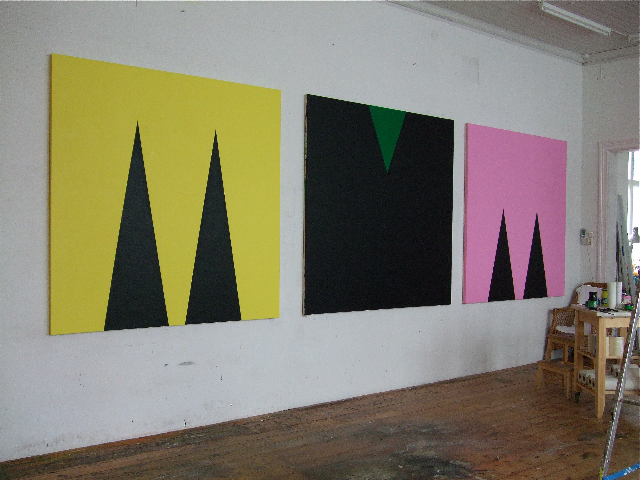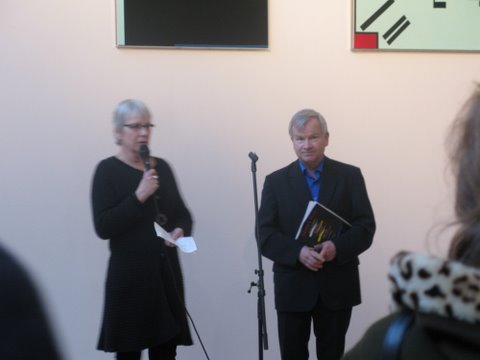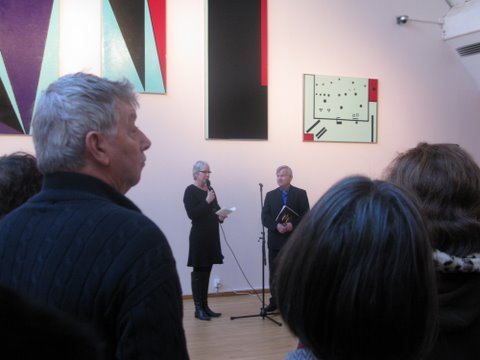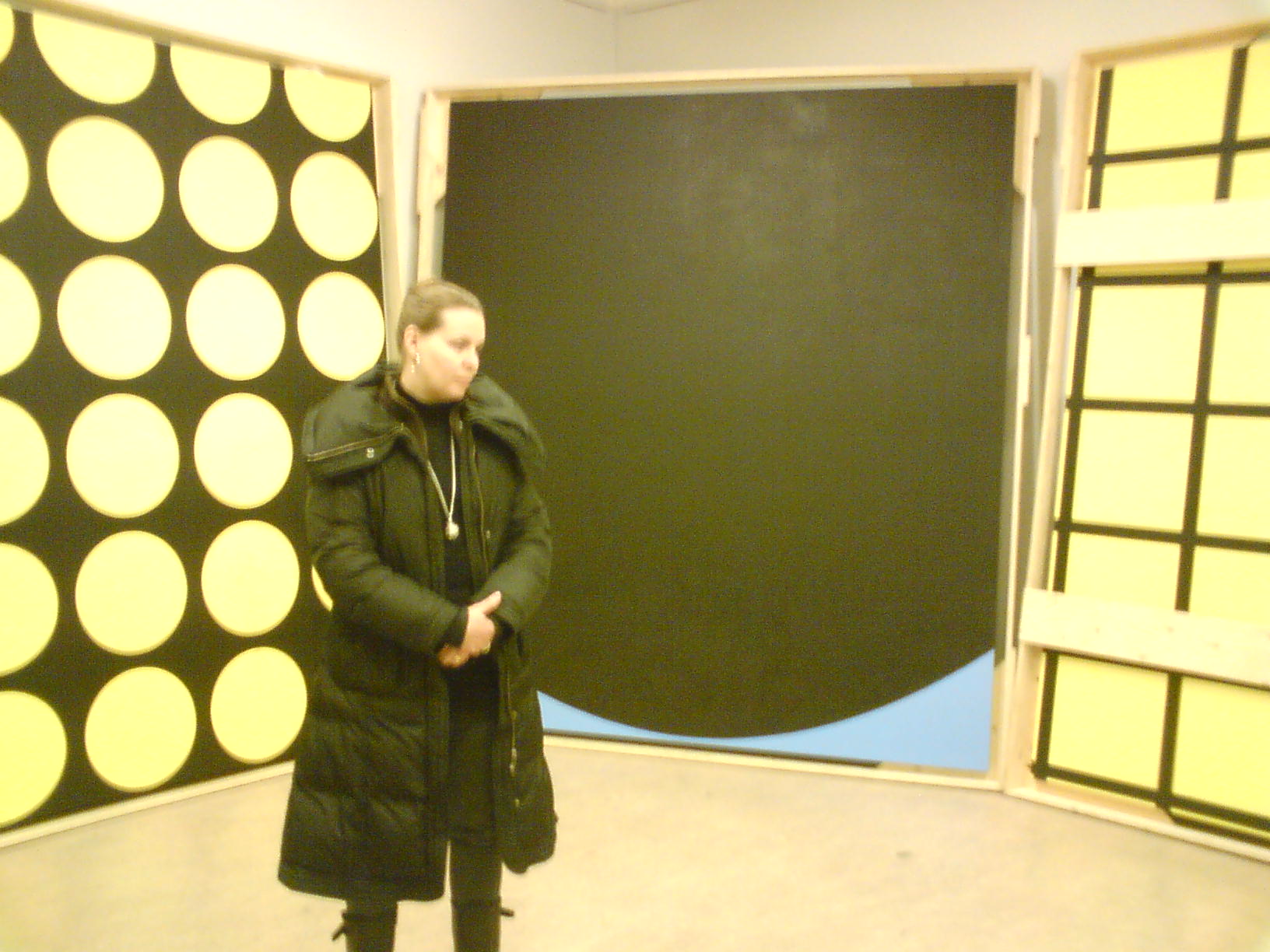
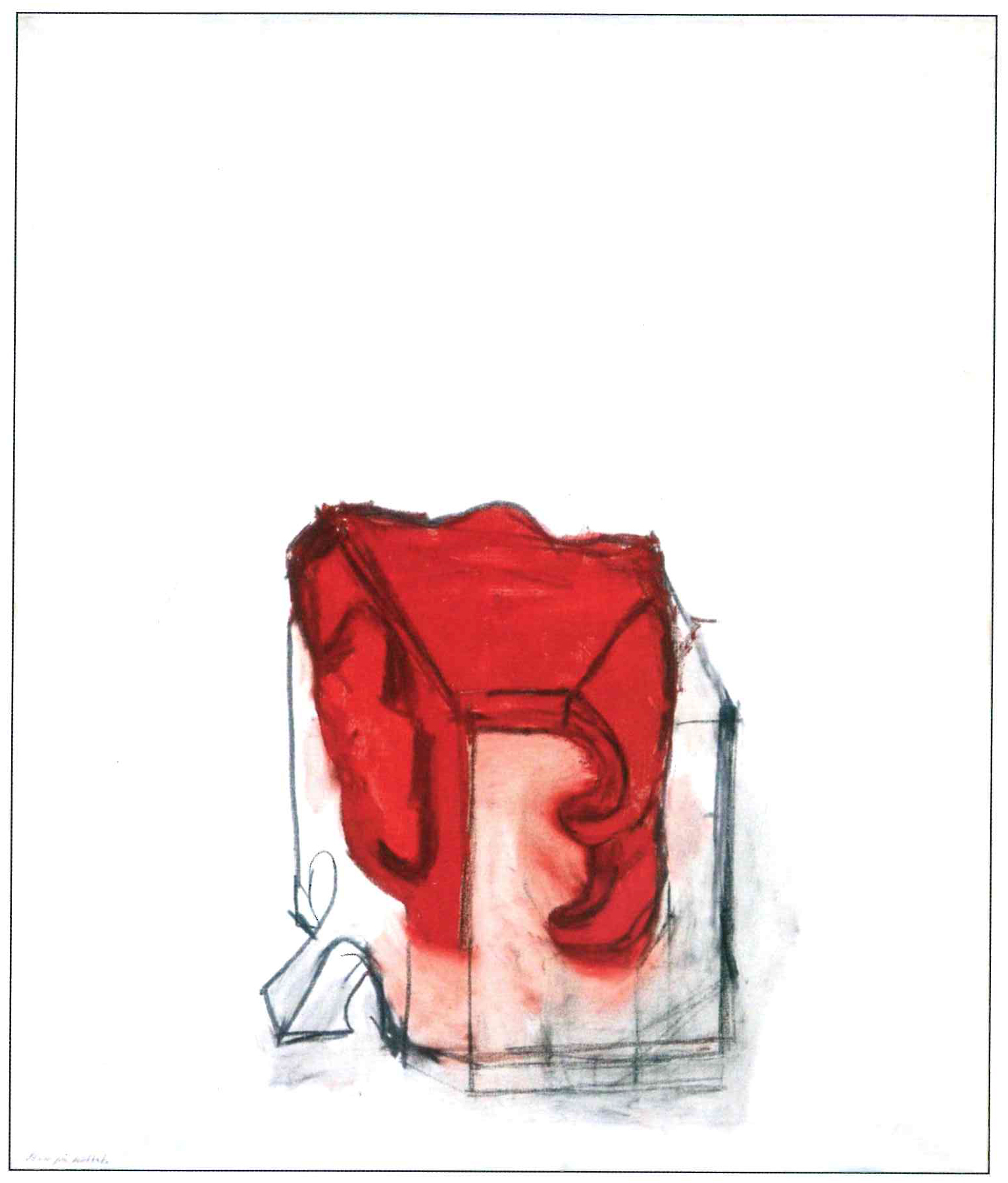

On several occasions, the art gallery has had the privilege of displaying art from the Rasjö family’s extensive art collection. Meeting in color was one of these exhibitions, with about 20 paintings by 7 significant and well-known Swedish artists. The exhibition can in retrospect be seen as a small section in Swedish art history as most of the artists have passed away. Two generations of painting, with color as a common theme. The older artists born during the first decades of the 20th century were Torsten Andersson, Olle Baertling, Eddie Figge, Lage Lindell and Ulf Trotzig. The younger generation, Jarl Ingvarsson and Ann Edholm are in their 50s.
Ann Edholm’s geometric paintings are characterized by large uniform color fields on canvas. “I want the color to have both a body and a surface that resembles velvet… The base color is black and she adds a component color that can be toxic yellow, bright orange or azure blue.” Lonely large circles met the audience centrally in the room, as in a kind of meditative meeting. Jarl Ingvarsson’s way of attacking the motifs with explosive expressiveness carried a completely different design language. Thick layers in every conceivable color capture motifs of everyday objects, characters, letters and splashes. In his debut at gallery Boibrino in 1984, his art bears traces of German punk generational painting and the trans avant-garde.
Perhaps the most internationally known artist in the exhibition, with his pure non-figurative geometric art, was Olle Baertling. “My quest for open form – to completely immaterialize the work into abstract infinite space at high speed…” are words where he describes his approach. The exhibition in Paris in 1953 became an entrance ticket to world fame. Eddie Figge adopted the informal painting as well as Ulf Trotzig. Lage Lindell developed an expressive sign painting, with traces of primitivism. The one who distanced himself from all forms of -ism to explore the language instead was Torsten Andersson. Hundreds of drawings could form the basis of a single painting before he was satisfied. Painting as a language struggle on life and death.
Compiled by Anneli Karlsson, and Encounter with color, quotes from Olle Baertling’s own manifesto “Prologue from a manifesto to open form” also published in Encounter with color.

